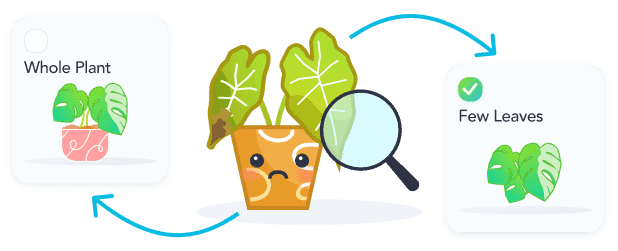Every 14d
Recommended Frequency
1 /2 cup of water
Recommended Amount
Like most succulents, the Haworthia Coarctata doesn't require much water. Deeply soak your plant every other week, allowing time for the soil to completely dry before watering again.
Every 150d
Recommended Frequency
Fertilize your Haworthia Coarctata twice a year, once in spring and once in autumn, using a cactus fertilizer diluted by half. Do not fertilize in summer.
Direct Sun
Recommended
Direct Sun is the most intense form of light that your plant will receive from indoors as they will be directly exposed to the sun's rays in this spot!
Every 1095d
Recommended Frequency
Repot your Haworthia Coarctata every three years, or once it outgrows its pot.
Sandy Soil
Recommended Soil
Peat Soil is an acidic soil that retains a lot of moisture and slows decomposition. Due to such a high moisture retention this mix may require irrigation to help with draining. This soil type is best used when paired wit...
Haworthia coarctata thrives in environments with humidity levels around 40-50%, which is considered average. This succulent prefers stable conditions without extreme fluctuations in moisture, ensuring healthy growth.

Shop Haworthia Coarctata
Questions about Haworthia Coarctata
Haworthia coarctata is a succulent plant native to South Africa, known for its striking, densely packed leaves that form a columnar shape. This low-maintenance plant thrives in well-draining soil and partial shade, makin...

Toxicity of Haworthia Coarctata

Common Pests and Diseases
Root Rot
Overwatering
To address root rot in Haworthia coarctata, first, cease watering immediately and allow the soil to dry out. If the plant is severely affected, unpot it and remove any mushy, black roots with a sterile instrument, then repot into fresh, well-draining soil. Ensure the pot has adequate drainage holes. Going forward, water only when the soil is completely dry, and avoid letting the plant sit in water.
Mealybug Infestation
Pseudococcidae family
Mealybugs can be a significant problem for Haworthia coarctata, manifesting as cotton-like masses on the plant. To combat this, first isolate the affected plant to prevent spread. Use a cotton swab dipped in alcohol to dab directly onto the pests, effectively killing them without harming the plant. For severe infestations, applying a systemic insecticide or neem oil can be effective. Ensure to follow the product's instructions carefully and repeat the treatment as necessary to eradicate the pests completely.
Root Rot
Fungal Infection
Root rot in Haworthia coarctata, often not directly caused by pests or overwatering, can stem from a fungal infection in the soil. To combat this, remove the plant from its pot, trim away any black, mushy roots, and treat the remaining healthy roots with a fungicide. Repot the plant in fresh, sterile potting mix and ensure the pot has adequate drainage. Avoid watering the plant until the topsoil is dry to touch, and ensure it receives good airflow to prevent future occurrences.

Related Plants
Other Articles:
Top 10 Most Popular Roses
Mar 22, 2022
How to Care for China Roses
Mar 11, 2022
How to Care for Chinese Money Plants
May 15, 2020
How to Grow and Care for A Bird of Paradise
Apr 26, 2020
Top 10 Plants To Grow In A Terrarium
May 31, 2022
How to Grow and Care for Lucky Bamboo
Mar 29, 2022
How to Grow and Care for Corn Plants
Mar 29, 2022
How to Care for Madagascar Dragon Trees
Mar 21, 2022



